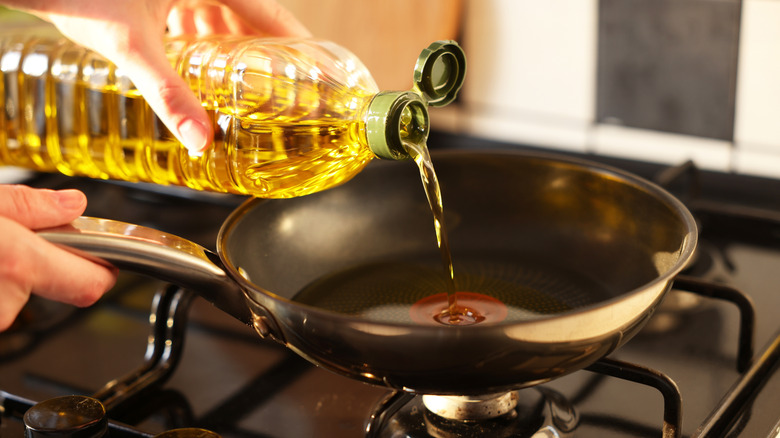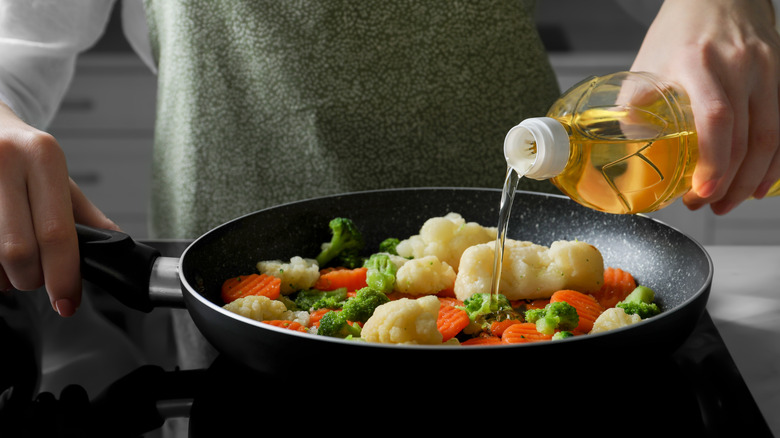Vegetable Oil Pours So Much Better With The Help Of A Fork
The mouth of a vegetable oil bottle is wide, making drizzling impossible. Some people use decanters, pour spouts, and other containers designed to make the perfect drizzle while looking cute on the counter. However, the convenience and aesthetic do nothing to keep the oil from going rancid. Like other cooking oils, vegetable oil reacts badly to heat in the kitchen, the air, and even the light.
It's best to keep the oil in its original bottle, which is why they come in containers with air-tight caps — but when you get that new bottle, do not remove the foil seal. Instead, grab a fork and poke a hole through it. The smaller holes will slow the oil flow, making pouring a teaspoon or a cupful easier. The smaller holes will make it easier to drizzle the oil into a pan or recipe.
If you want to spend some money, consider these options
If you want to buy a decanter or a pour spout for the vegetable oil container, there are a few things to consider. The usual decanters are open and expose the oil to the air. Look for decanters with caps or covers that close with an airtight seal. They must also be sturdy containers that won't degrade as the oil interacts with the material they are made from. Use the same logic when looking for pour spouts to go on top of the container. Pour spouts cover the opening, replacing the original cap. The spouts are usually open, allowing the air to enter, which can make the oil rancid long before the end of its shelf life. If you want to use a pour spout instead of poking holes in the foil seal with a fork, look for spouts that come with covers and lids. They must form an airtight seal to prevent air from entering the bottle. These alternative methods can be pricey, but the fork method is free: You open the utensil drawer for the tool you need, and your oil is easier to pour in a few seconds.

